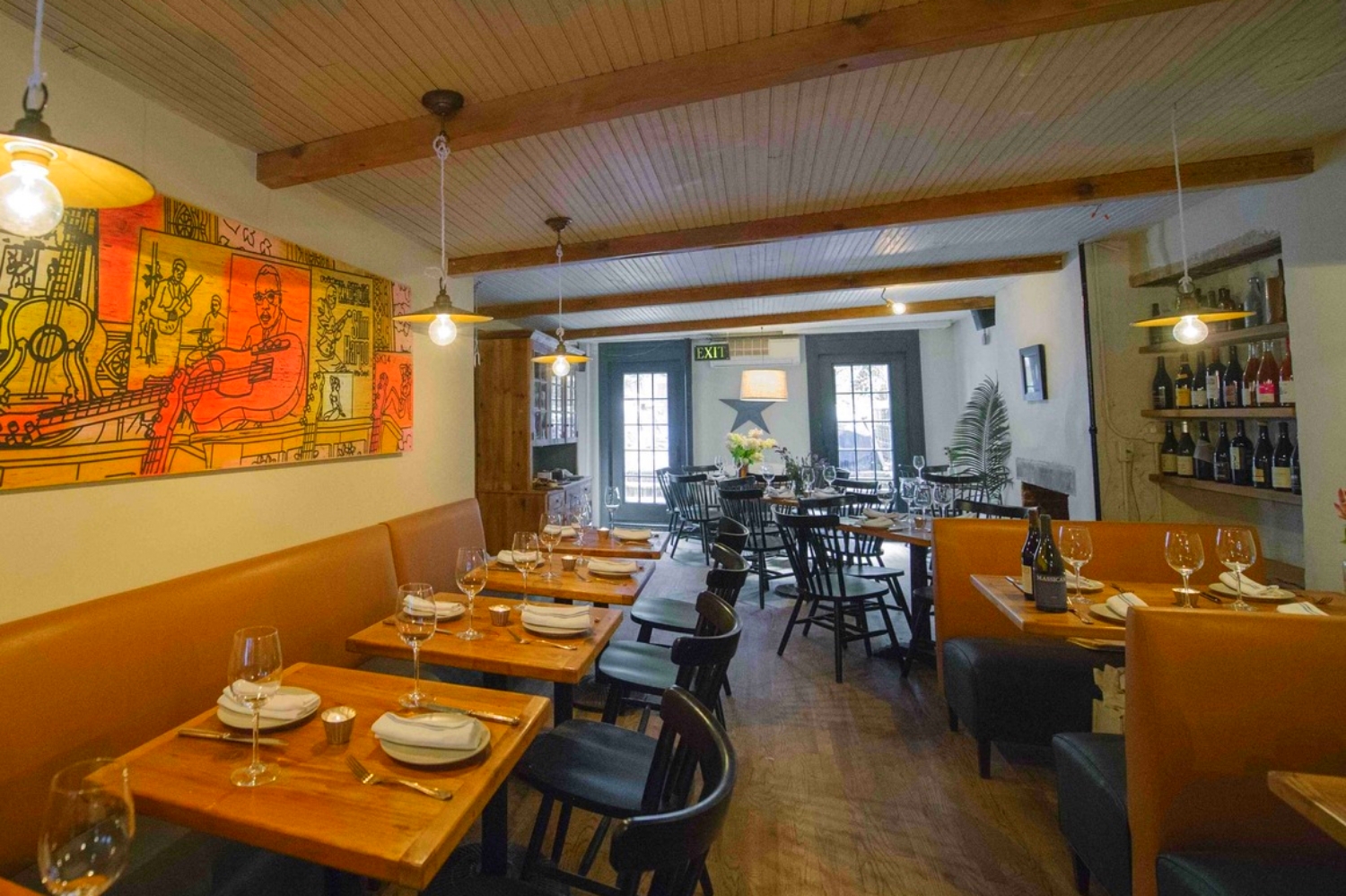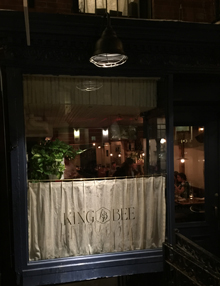
 Until 2004, I was not familiar with Greek seafood restaurants that hawk fish by the pound, until the Post’s Steve Cuozzo called them out for the practice—with characterisic bile. Soon after, I fell in love with Thalassa, despite an admittedly confusing price structure that was exactly what Cuozzo had complained about.
Until 2004, I was not familiar with Greek seafood restaurants that hawk fish by the pound, until the Post’s Steve Cuozzo called them out for the practice—with characterisic bile. Soon after, I fell in love with Thalassa, despite an admittedly confusing price structure that was exactly what Cuozzo had complained about.
 Alas, the broader public didn’t share my admiration for Thalassa. A few years later, during the Great Recession, they switched to fixed-price entrées, and haven’t gone back. Other restaurants of its ilk have been more successful, including Estiatoria Milos in Midtown, which has survived good times and bad, despite final bill that is as punishing as it is unpredictable.
Alas, the broader public didn’t share my admiration for Thalassa. A few years later, during the Great Recession, they switched to fixed-price entrées, and haven’t gone back. Other restaurants of its ilk have been more successful, including Estiatoria Milos in Midtown, which has survived good times and bad, despite final bill that is as punishing as it is unpredictable.
Limani, a newcomer in this genre, sailed into town last November. The staff are pros at this, as there’s a sister Limani in Roslyn, NY, and much of the senior staff has worked for the Milos chain at some point.
They’ve certainly nailed the atmosphere: 8,000 square feet of Aegean fantasy, with white seats, white marble tile, sheer curtains, and a reflecting pool that changes its hue on a cycle from blue to violet, and back again.
The booths look luxurious, but on both my visits we were seated at a cramped two-top near the open kitchen. And then you realize, for a luxury restaurant, it certainly is loud in here.


I haven’t been to Milos, but the service style at Limani corresponds to everything I’ve read about it, as well as how it used to be at Thalassa before they switched out the menu. Before you order, your server escorts you to the fresh fish station, where the day’s catch is arrayed on ice—most of it imported from the Mediterranean. Prices are posted, generally by the pound, leaving you guessing as to how much that pretty red snapper will set you back. Only after you’ve chosen a specimen is it put on the scale, and the damage assessed.

 There are standard appetizers and salads, with prices printed on the menu, although not shown online. My recollection, though, was that the non-fish items were fairly priced, for a midtown luxury restaurant. There are a handful of meat entrées, but if you order any of these, you’re missing the entire point of the restaurant.
There are standard appetizers and salads, with prices printed on the menu, although not shown online. My recollection, though, was that the non-fish items were fairly priced, for a midtown luxury restaurant. There are a handful of meat entrées, but if you order any of these, you’re missing the entire point of the restaurant.
Anyhow, with ordering out of the way, you’ll get a basket of warm bread and a bowl of olive oil for dipping (above right).


On both visits, we knew a large whole fish was coming, so we didn’t order large appetizers. An order of Gigantes (large baked beans; $12; above left) was mediocre. A Romaine salad ($15; not pictured) was okay. On the whole, it’s better to stick with a seafood starter. Scallops on the half-shell ($12; above right) were terrific.


Whichever whole fish you’ve chosen, it’ll be brought to the table and portioned while you watch. On my two visits, we tried the Fagri ($86.86; above left) and the Red Snapper ($90.82; above right). Both were sufficient for ample helpings of fish for two. As you can see from the photos, there’s not much difference in the preparation style from one to another. But the kitchen does a lovely job—as they should when whole fish are the entire premise of the restaurant.
You pay handsomely for the privilege. The prices aren’t insane, given the provenance of the ingredients, but you could spend less elsewhere. On the other hand, according to Pete Wells’s recent review in the Times, you’ll pay a lot more at Milos for the identical species. As the fish are served à la carte, you’ll probably want a side dish or two. Like the rest of the menu, they’re a bit pricey at $12 each, but as I recall, both that we tried (asparagus; cauliflower & broccoli) were exemplary.
The online wine list, like the food menu, is without prices, a really deplorable state of affairs. It skews mostly white, as you’d expect, with a handful of Greek bottles and many more from other regions. As I look back on my receipts, it seems I chose the identical item both times (a Domaine Bizet Sancerre), as I found the rest of the list too expensive.
I was surprised that Wells bothered to review Limani. He gave it just one star (for him, that’s a pan), and it didn’t really cry out for a review: most of his competitors ignored it, as they generally do with expensive Midtown restaurants that break no new culinary ground. As Frank Bruni once pointed out, there is little reason for a review that simultaneously calls attention to a place you otherwise wouldn’t have heard of, and then tells you to avoid it.
I would make a case for Limani. It’s not perfect: the room is too loud (for my taste), and the non-fish options aren’t strong enough, in relation to the expense. The online menu and wine list ought to include prices: for what they’re charging, they can afford that. But the imported fresh fish are Limani’s core competency; this, it executes beautifully. If you’re looking for a fancier night out, and can afford the prices, you’ll probably go home happy.
Limani (45 Rockefeller Plaza, 51st Street between Fifth & Sixth Avenues)
Food: Greek seafood, most of it served by the pound
Service: Very good, as it should be at these prices
Ambiance: A luxurious blue-and-white Aegean atmosphere; a bit too loud
Rating: ★★
 Sunday, October 4, 2015 at 03:49PM
Sunday, October 4, 2015 at 03:49PM  Michelin in
Michelin in  Restaurant Ratings
Restaurant Ratings 

































